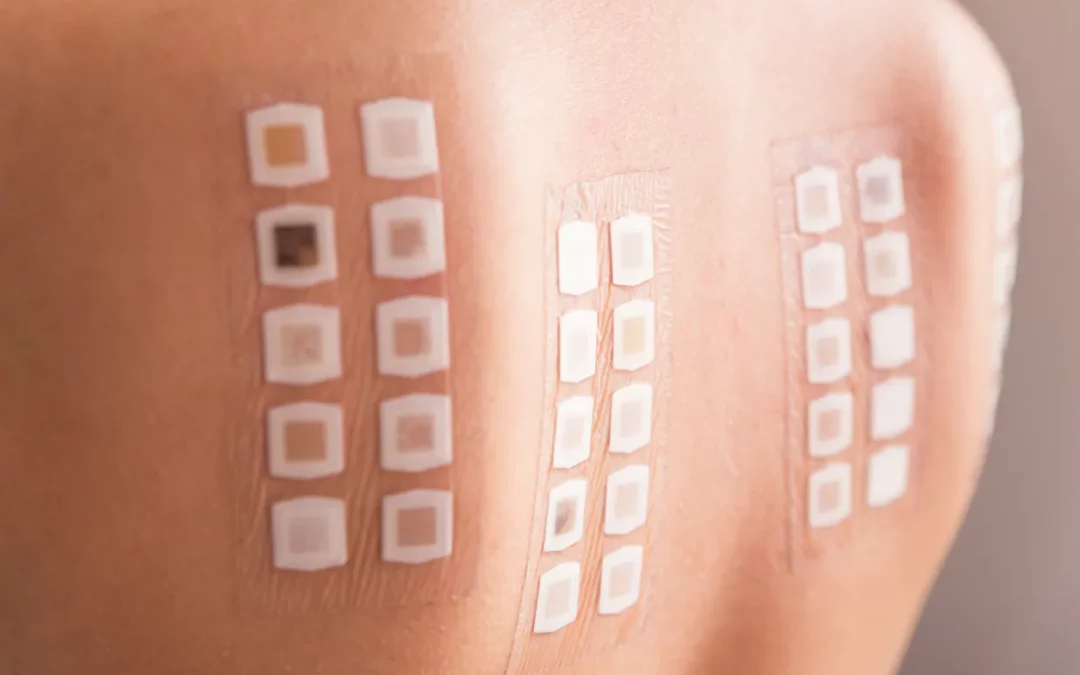An allergy happens when a certain substance is recognized as harmful by our body’s immune system. The body reacts by causing an allergic reaction against the substance also called as an allergen.
There are many different types of allergies, and it is very important to identify the type of allergy you have and work with your doctor to create a plan to manage your allergy. Let us look at the different types of allergies:
Food Allergy
Food allergy occurs when your body overreacts to a specific food or a substance in the food. Any type of food can trigger an allergy. However, 90% of all allergic reactions are caused by these 8 foods: Eggs, peanuts, milk, fish, tree nuts, wheat, soy and shellfish. Symptoms of food allergy can start within few minutes of ingestion or in some cases may appear after 4-6 hours. Most common symptoms of food allergy are- Vomiting, hives, shortness of breath, wheezing, cough, trouble swallowing, swelling of the tongue, pale or blue colouring of skin and dizziness.
Skin Allergy
Itching, redness, rashes and bumps are commonly seen skin conditions, but their cause may not be easy to identify. Most common skin rashes which occur due to allergy are Eczema and hives. Eczema or Atopic dermatitis affects around 10 – 20% of children. It usually appears as dry, red and itchy skin. Hives also called as urticaria appears as red bumps or welts on the skin. Sometimes you see a rash when the skin comes in contact with an irritant or an allergen. This is called contact dermatitis. It can occur due to many substances like soap, detergent, adhesives, plants, latex gloves, some metals etc.
Dust Allergy
An Allergic reaction which occurs due to breathing in irritants present in air is called dust allergy. Symptoms of dust allergy are similar to that of asthma like: coughing, sneezing, red or teary eyes, wheezing and shortness of breath. Common allergens for dust allergy are dust mites, mold, pollen, cockroaches, pet hair, feathers or fur. People with dust allergy suffer more inside homes. Symptoms worsen during or after sweeping, dusting or vacuuming. If you think you are allergic to any of the allergens given above, see an allergist.
Insect Sting Allergy
Sting from these 5 insects- honeybees, wasps, hornets, yellow jackets and fire ants – commonly cause allergic reaction towards the venom or chemical injected into the skin. Most of the people are not allergic to insect venom, however, the pain due to sting may make them feel as if its an allergic reaction. Knowing the difference between a normal reaction and an allergic reaction can reduce anxiety and save a trip to the doctor. Common symptoms of insect sting allergy include pain, swelling, redness, hives, itching and in rare cases Anaphylaxis (potentially life-threatening reaction).
Pet Allergy
If you get a runny nose, watery eyes or you start sneezing, coughing or wheezing every time you play with a cat, dog or any other pet, then most likely you have a pet allergy. Pet allergy can cause constant allergic symptoms because exposure can happen at school, work or home, even in the absence of pet.
Eye Allergy
If you experience redness, itchiness, burning or tearing in your eyes, you may have an eye allergy. These symptoms can occur alone or be accompanied by sneezing or stuffy nose. Common triggers for an eye allergy are pollens from trees or weeds, dust mites, pet dander, mold, perfume, cigarette smoke and diesel exhaust. The symptoms of eye allergy can vary from mild redness to severe inflammation which can even impair vision. Therefore, if symptoms persist even after using over-the-counter medicines then, see an allergist.
Drug Allergy
When you develop rashes, hives or breathing problems after taking certain medicines, it is called drug allergy. People with drug allergy can experience symptoms regardless of the form in which they take medicine (pill, syrup or injectable form). Symptoms of drug allergy range from rashes, wheezing, itching to dizziness and anaphylaxis which is a potentially life-threatening reaction. Drugs which are known to cause allergy are Penicillin, sulfa drugs, anticonvulsants, aspirin, Ibuprofen and chemotherapy drugs. If you feel you are allergic to any drug, then you should inform your doctor so that he/she can avoid prescribing that particular drug.
Allergic Rhinitis
Is your nose runny and stuffy most of the time and eyes, mouth and skin often feels itchy? If yes, then you must be suffering from allergic rhinitis. This condition affects 40 to 60 million people in America. Allergic rhinitis is commonly called as Hay fever and is of 2 types- Seasonal; which occurs during the particular season like spring, summer or fall and Perennial; which occurs all round the year. Common allergens for allergic rhinitis are pollens, dust mites, pet hair, perfume and cigarette smoke. To find the best and most effective way to treat allergic rhinitis, you need to see an allergist.
Latex Allergy
When a person shows allergic symptoms after coming in direct contact with latex, it is called latex allergy. Latex is a common component of many medical and dental supplies like disposable gloves, syringes, stethoscope, catheters, airway and intravenous tubing and dressings. Latex is also found in consumer products like condoms, balloons, rubber toys, bottles, pacifiers, athletic shoes and handbags. Common symptoms of latex allergy are itching, hives, runny nose, wheezing, difficulty breathing and anaphylaxis.
Mold Allergy
Mold is basically fungus which can grow anywhere. It is mostly found in dark, warm and moist places like cabinets, bathrooms, basement, garage etc. If you experience allergic symptoms like the runny or stuffy nose, sneezing, itching, coughing, irritated eyes then you must be allergic to mold. Your best bet is to consult an allergist who can pinpoint the type of allergy and recommend effective treatment.
Click HERE or call 208-377-4000 to schedule an appointment!


